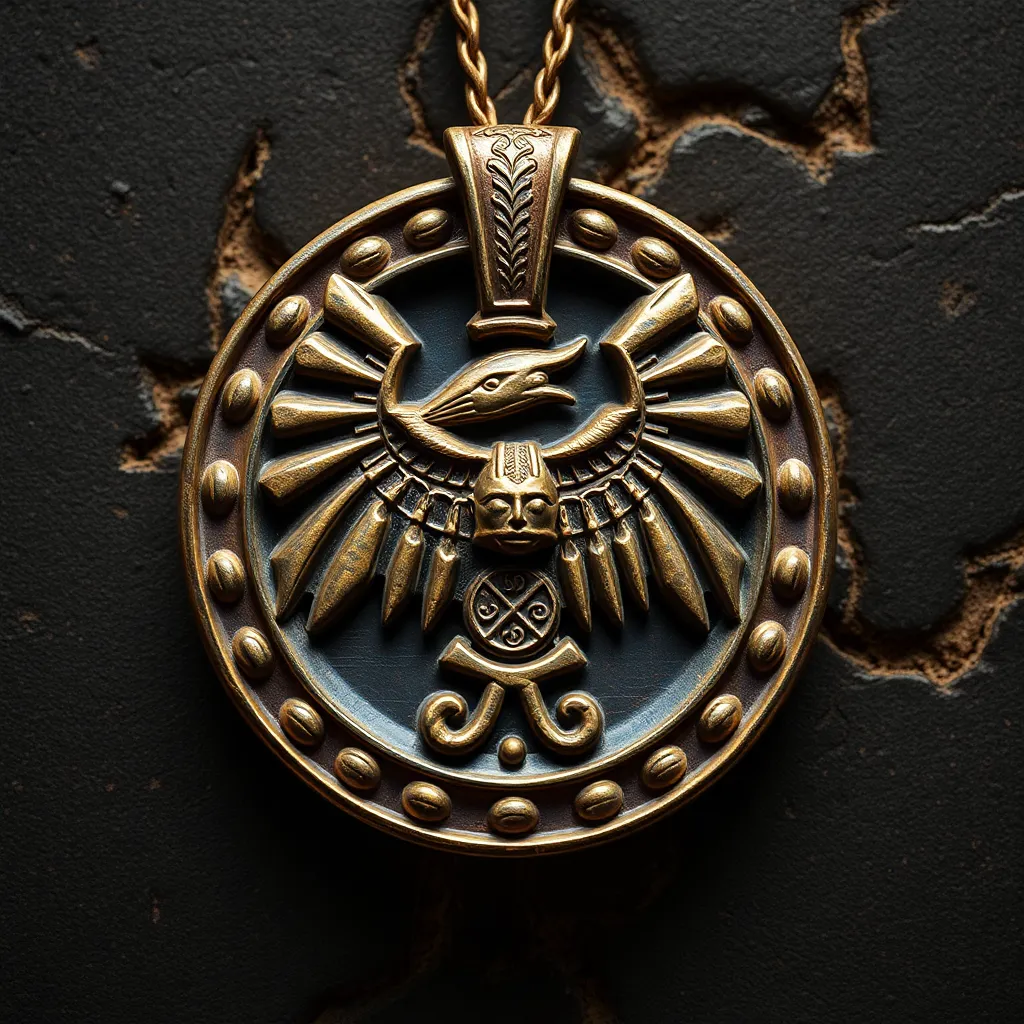Amulets of the Underworld: Protection from Duat
I. Introduction
Amulets have long held a significant place in human history, serving as protective talismans that provide security and assurance in the face of danger. In ancient Egypt, these objects took on profound meanings and were intricately linked to the beliefs surrounding life, death, and the afterlife. As guardians of the soul, amulets were believed to offer protection against malevolent forces and to ensure safe passage through the perilous realm of the dead, known as Duat.
Duat, in ancient Egyptian mythology, is not just a place of darkness and despair; it is a complex realm that embodies the journey one undertakes after death. This article explores the critical role of amulets as protective devices against the dangers of Duat, examining their historical significance, types, and the spiritual practices surrounding them.
II. The Concept of Duat in Egyptian Mythology
Duat is described as the realm of the dead in ancient Egyptian beliefs, a mystical landscape where the souls of the deceased navigate a perilous journey filled with trials and tribulations. It is a place where the dead confront various challenges, including encounters with malevolent beings and judgment from the gods.
The significance of Duat is profound, as it represents both a destination and a transformative journey for the deceased. It is here that the soul undergoes trials to determine its worthiness for eternal life. Key deities associated with Duat include:
- Osiris: The god of the afterlife, who judges the souls of the deceased.
- Anubis: The god of embalming and the protector of graves, guiding souls through Duat.
- Ma’at: The goddess of truth and justice, whose feather is used to weigh the heart of the deceased against.
III. The Role of Amulets in Ancient Egyptian Culture
Amulets were an essential aspect of ancient Egyptian culture, worn by the living and placed within tombs for the deceased. They were crafted to provide protection, health, and good fortune, often inscribed with sacred symbols and texts. The historical context of amulets reveals their importance in both daily life and in the journey to the afterlife.
Types of amulets varied widely, each serving a specific purpose:
- Protective Amulets: Designed to ward off evil spirits and ensure safe passage.
- Healing Amulets: Used to promote health and well-being.
- Fertility Amulets: Believed to enhance reproductive abilities and ensure childbirth safety.
Common materials used in amulet creation included precious stones, metals, and clay, while symbols such as the Eye of Horus, the Ankh, and the Scarab beetle were frequently employed to enhance their protective qualities.
IV. Specific Amulets Designed for Protection in Duat
Among the myriad of amulets, several were particularly significant for protection in Duat:
- The Eye of Horus: Symbolizing protection, royal power, and good health, it was believed to guard the deceased against dangers in the afterlife.
- The Ankh: Representing life and immortality, it was often used to ensure the soul’s continued existence in the afterlife.
- The Scarab: This symbol of rebirth and regeneration was thought to protect the soul and assist in the journey through Duat.
These amulets were not just ornamental; they were believed to function as conduits of divine protection, ensuring that the souls of the dead navigated the treacherous waters of Duat safely.
V. Rituals and Practices Involving Amulets
The crafting and consecrating of amulets involved intricate rituals, often performed by priests who invoked the gods’ blessings. This process ensured that the amulet would serve its protective purpose effectively.
Amulets played a vital role in burial and funerary practices, often placed in tombs alongside the deceased. Their presence was meant to assist the dead in overcoming obstacles in Duat, providing them with the necessary protection and guidance.
Personalization of amulets was also common, with names, spells, and individual symbols inscribed on them to cater to the specific needs and identity of the deceased. This customization highlighted the belief that each soul required unique protection in the afterlife.
VI. The Symbolism of Amulets in the Afterlife
Amulets served as powerful symbols of protection and authority over one’s fate in the afterlife. They embodied the connection between the physical world and the spiritual realm, acting as intermediaries that facilitated the soul’s journey through Duat.
Case studies of tomb discoveries have revealed the extensive use of amulets and their significance in ancient Egyptian burial practices. For instance, the tomb of Tutankhamun contained numerous amulets, each with specific protective functions, demonstrating their essential role in ensuring safe passage to the afterlife.
VII. Modern Interpretations and Uses of Amulets
In contemporary culture, there has been a resurgence of interest in ancient Egyptian symbols, including amulets. Modern practitioners often incorporate these symbols into their spiritual practices, viewing them as tools for protection and guidance.
The impact of archaeological discoveries on our understanding of amulets cannot be overstated. These findings have shed light on the materials, meanings, and rituals associated with amulets, allowing us to appreciate their significance in ancient Egyptian society.
VIII. Conclusion
In summary, amulets played a crucial role in ancient Egyptian beliefs regarding protection from the dangers of Duat. They served not only as symbols of power and safety but also as integral components of the rituals surrounding death and the afterlife.
The enduring legacy of ancient Egyptian beliefs is reflected in the continued fascination with their practices and symbols. Amulets remain a powerful reminder of humanity’s quest for meaning, protection, and connection to the divine in the face of life’s most profound mysteries.




